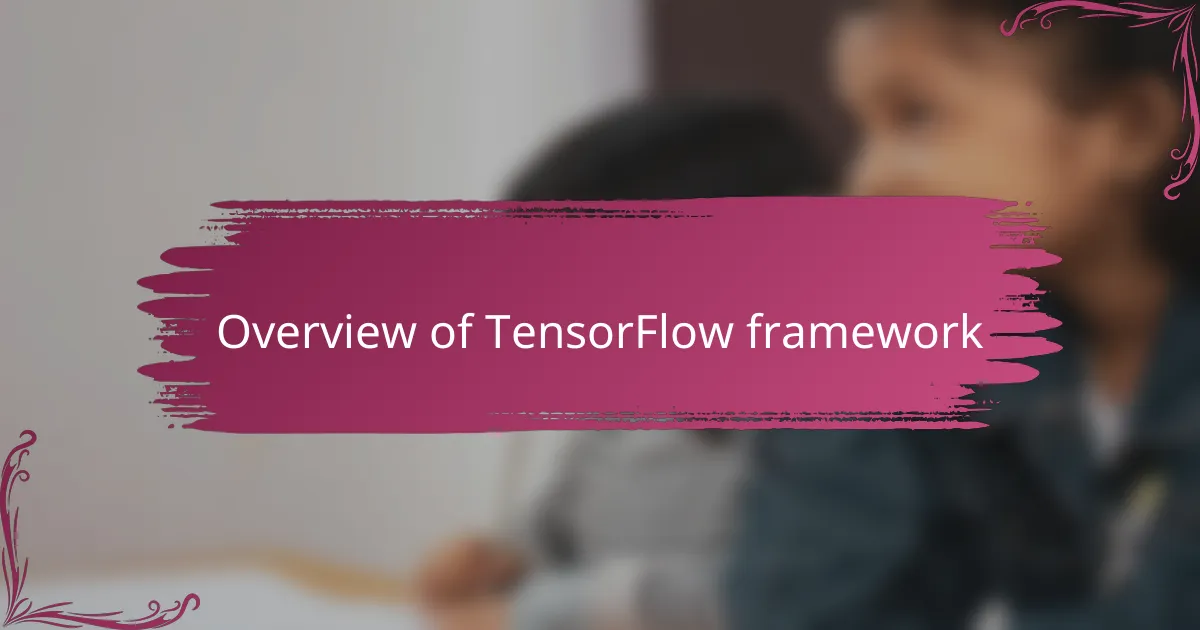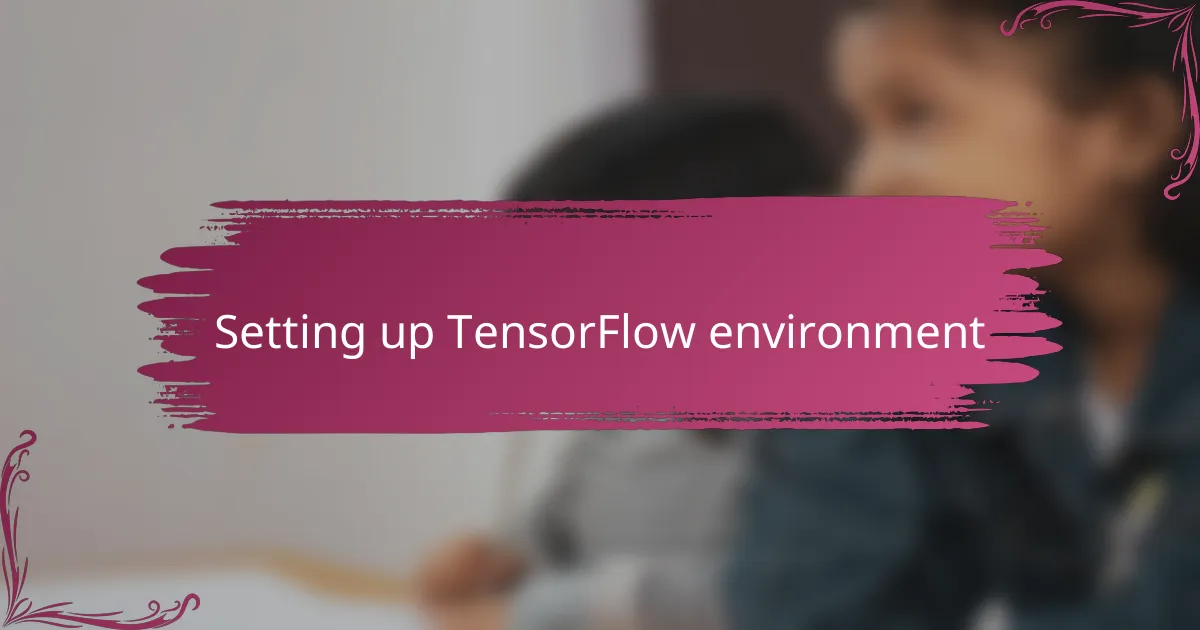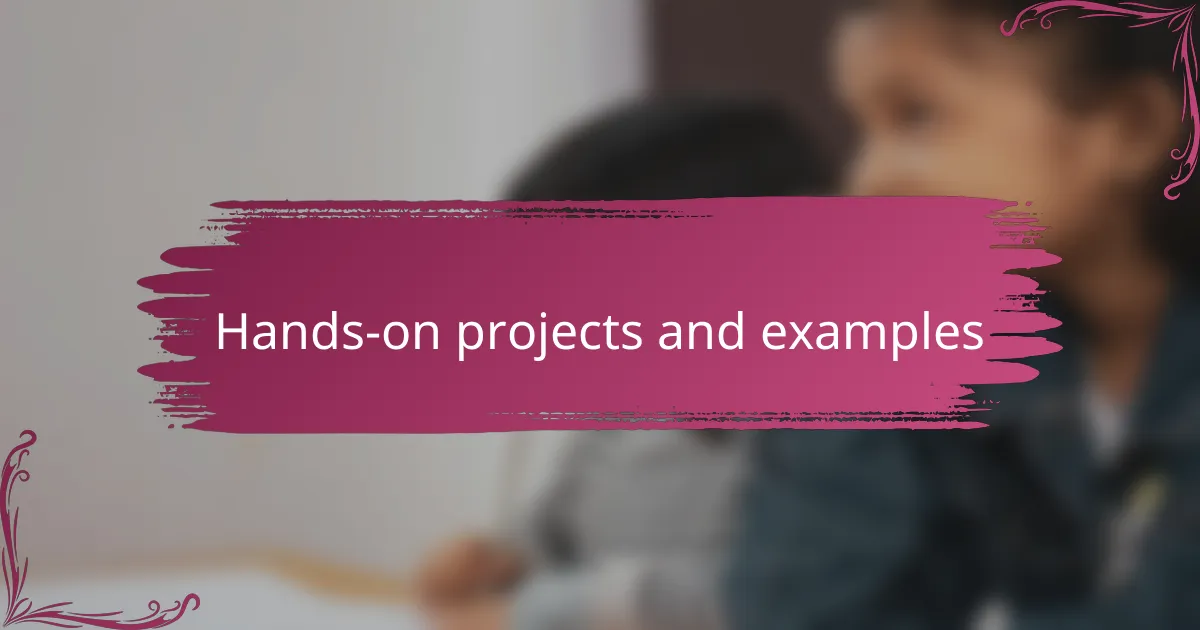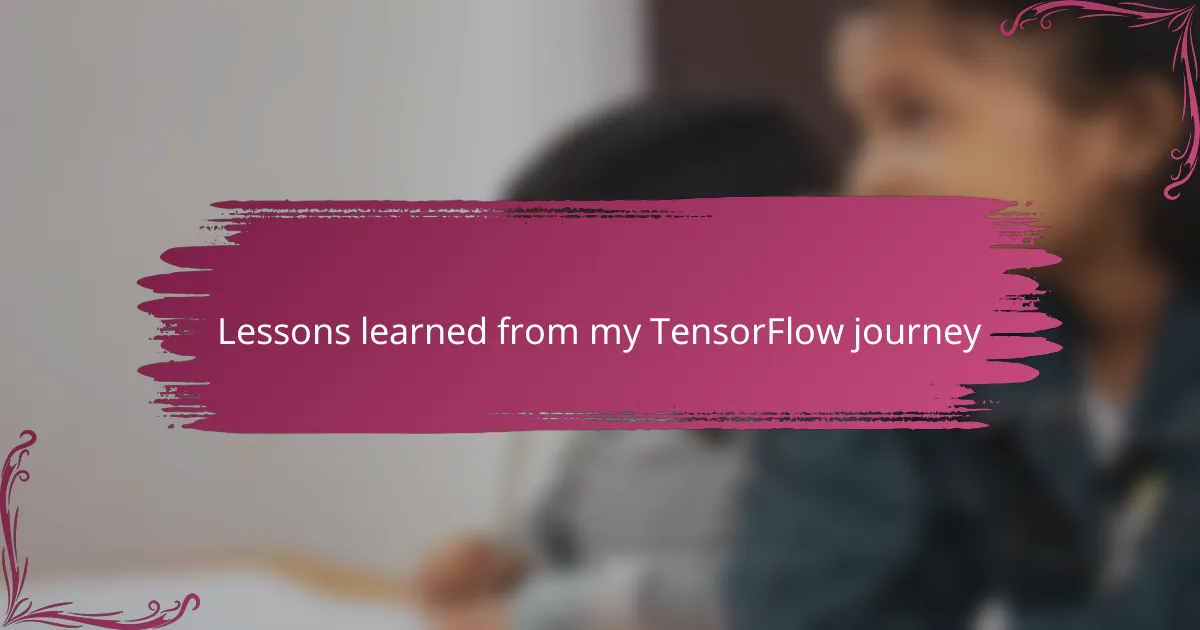Key takeaways
- Machine learning involves teaching computers to learn from data, enabling models to improve and recognize patterns without explicit programming.
- Tuning hyperparameters and managing data preprocessing are essential skills, with experimentation and community insights being crucial for overcoming challenges.
- Hands-on projects provide practical experience, allowing for rapid prototyping and iterative learning, enhancing understanding of machine learning concepts.
- Patience and a willingness to experiment are vital, viewing setbacks as opportunities for deeper learning and leveraging community resources for support.

Introduction to machine learning concepts
Machine learning, at its core, is about teaching computers to learn from data rather than programming them with explicit instructions. When I first encountered this idea, I was both fascinated and overwhelmed—how could a machine possibly ‘learn’ like a human?
What intrigued me most was the concept of models improving over time by recognizing patterns. Have you ever wondered how your email filters spam or how recommendation systems seem to know your tastes? That’s machine learning quietly at work behind the scenes.
Starting with these foundational ideas helped me appreciate the endless possibilities—and challenges—of machine learning. It’s not just about coding; it’s about letting the system discover insights I might never have considered myself.

Overview of TensorFlow framework
TensorFlow quickly became my go-to tool when I decided to dive deeper into machine learning. Developed by Google, this open-source framework stands out because it simplifies the complicated math behind training models. Have you ever struggled with making sense of those complex computations? TensorFlow hides much of that complexity, letting me focus more on experimenting and less on the technical grind.
What really impressed me was TensorFlow’s flexibility. Whether working on a simple linear regression or a deep neural network, I could rely on the same core tools. At times, the vastness of options felt intimidating, but the community support and extensive documentation made the learning curve much smoother.
One feature I found particularly valuable was its support for both CPUs and GPUs. Early in my journey, training models took forever on my laptop, but switching to GPU acceleration with TensorFlow cut that time dramatically. This practical boost kept my motivation high and let me iterate faster than I expected.

Setting up TensorFlow environment
Getting TensorFlow up and running felt like the first real hurdle in my journey. I remember wondering, could setting up this environment be as complicated as it sounded? Thankfully, installing TensorFlow was smoother than I feared—using Python’s package manager, pip, made everything feel straightforward and manageable.
I also realized pretty quickly that having the right version of Python and other dependencies was crucial. At one point, I faced errors that sent me down a rabbit hole of troubleshooting—compatibility issues taught me to pay close attention to version requirements. It was a little frustrating, but overcoming those hiccups gave me a solid foundation and confidence in managing the environment.
Do you know what made the biggest difference? Setting up a virtual environment. This simple step kept my projects clean and prevented conflicts between libraries. From my experience, isolating TensorFlow this way is a game-changer that saves headaches later on, especially when juggling multiple machine learning experiments.

Basic machine learning models in TensorFlow
When I first started building basic machine learning models in TensorFlow, I was amazed at how easily I could implement core algorithms like linear regression and simple neural networks. Have you ever thought that creating a model might require years of expertise? TensorFlow’s high-level APIs, like Keras, made it feel surprisingly approachable—even for someone still learning the ropes.
One moment that stuck with me was training a straightforward classification model using TensorFlow’s built-in layers. Watching the loss decrease epoch by epoch gave me a real sense of progress and motivation. I realized that these fundamental models aren’t just academic exercises; they form the foundation for so many real-world applications.
Of course, I also encountered moments of frustration when tuning parameters or handling data preprocessing. But looking back, those challenges deepened my understanding of how models learn and generalize. It’s in those basic models where I truly grasped the magic behind machine learning—machines learning patterns from data, step by step.

Common challenges faced and solutions
One challenge I often faced was managing data preprocessing. It felt like a tedious puzzle—how do I clean, normalize, or reshape my data so that the model actually learns something useful? I found that investing time in understanding TensorFlow’s data pipelines paid off, as it made feeding data efficient and less error-prone.
Another hurdle was tuning hyperparameters. Honestly, it sometimes felt like throwing darts blindfolded—how do I know if increasing the learning rate or changing batch size would help? Experimentation combined with reading community insights taught me that systematic trial and error, along with patience, is key here.
I also struggled with model overfitting, where the model learned the training data too well but stumbled on new data. To tackle this, I started incorporating techniques like dropout and early stopping, which really helped improve the model’s ability to generalize. Have you ever had that frustrating moment when your model shines during training but fails in real-world use? That’s where I realized that understanding these pitfalls makes all the difference.

Hands-on projects and examples
Diving into hands-on projects was a turning point for me. I remember building a simple image classifier using TensorFlow’s Keras API—at first, it felt like assembling a puzzle without the picture on the box. But as the model began to recognize handwritten digits correctly, the sense of accomplishment was incredibly motivating.
One project involved working with TensorFlow’s datasets and experimenting with different model architectures. I asked myself, “What if I tweak this layer or change the activation function?” Each experiment brought new insights, and sometimes unexpected results, which taught me that learning by doing is irreplaceable. Have you tried tweaking parameters just to see what happens? It’s both fun and frustrating, but always enlightening.
What surprised me most was how quickly I could prototype models and test ideas end-to-end. Using TensorFlow’s eager execution mode made debugging feel intuitive, almost like reading my own thought process in code. This hands-on approach didn’t just teach me machine learning concepts—it showed me how to think like a practitioner, iterating and improving with every run.

Lessons learned from my TensorFlow journey
Looking back on my TensorFlow journey, one lesson stands out clearly: patience is essential. There were times when the code just wouldn’t work, models wouldn’t converge, or errors popped up without clear explanations. I learned that these moments aren’t failures but part of the process—it’s about embracing setbacks as stepping stones toward deeper understanding.
Another insight I gained is the importance of community and resources. Whenever I hit a wall, diving into forums, tutorials, and official docs turned out to be a lifeline. Have you ever felt stuck for hours, only to find one simple tip online that untangles everything? That’s why I believe no TensorFlow journey is truly solo; it’s a path walked alongside many generous contributors.
Finally, I realized that getting comfortable with experimentation changed everything. Early on, I hesitated to tweak models too much, worried about breaking something. But as I grew more confident, I started treating experimentation like a conversation with the model itself—asking questions through code, then listening carefully to the answers in the results. That mindset shift made learning way more engaging and productive.